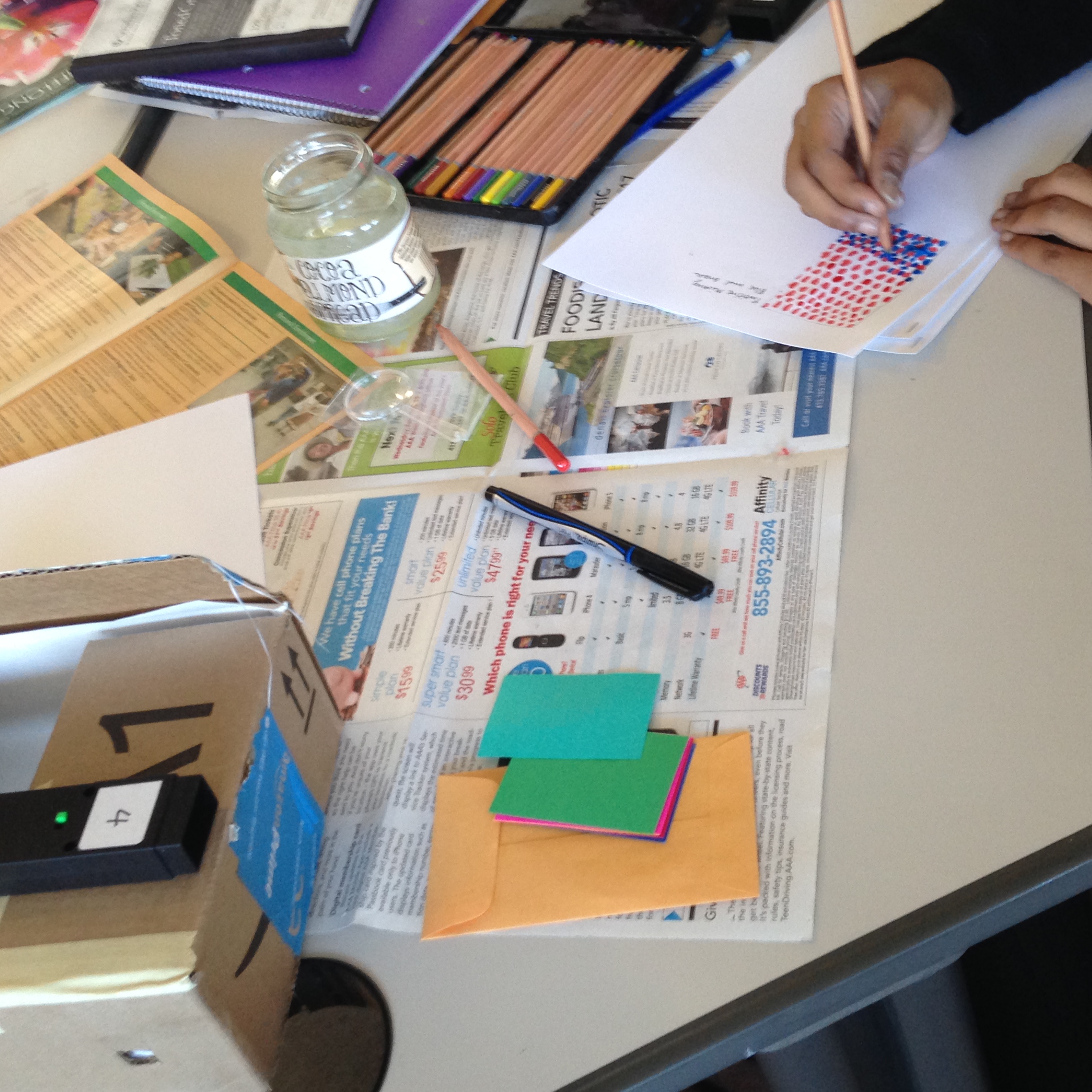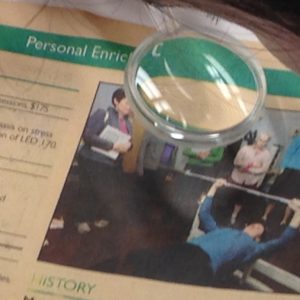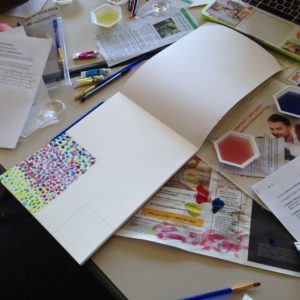Color Physics @Hampshire, Days 15-17
Days 15, 16, and 17 were spent on hands-on activities in which students investigated subtractive mixing by reflection, and explored the use of additive and subtractive mixing in print and painting. The activities included:
- Creating partitive mixtures in the pointillist style

- Investigating and replicating the use of halftone in print


Students used magnifying glasses to look at newsprint and determined how the CMYK system is used for printing. Then the made their own halftone designs.
- Investigating subtractive mixing by reflection.
 This portion involved three different activities:
This portion involved three different activities:
- In the first, students placed pieces of paper of various colors in a light-tight box, illuminated them by one of the lights we have (red, green, or blue), and recorded their observations. The papers we used were to an OK approximation, red, blue, green, cyan, magenta, and yellow.
- In the second activity, students used their observations from the first to predict what colors the same pieces of paper would appear to have when illuminated by white light, but viewed through filters of different colors. They then tested their predictions and commented on any discrepancies.
- Finally, using what they learned from the first two activities, students devised a method by which they can determine how “pure” the cyan, magenta, and yellow pigments in their watercolor sets were.
- Holography. Thanks to Prof. Wirth, each student got to make a hologram using reflection holography.
made holograms today in my physics of color class ? @physartphil pic.twitter.com/9Hu4I7clzY
— sara (@saraannyong) April 6, 2017

A student-made hologram of a thread spool